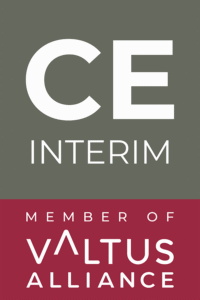Not enough time to read the full article? Listen to the summary in 2 minutes.
Across Germany’s Mittelstand, many CEOs believe they’re “doing AI.”
They’ve launched pilots. Assigned teams. Bought software.
But AI readiness is not a label. It’s an operating shift.
And in 2025, that shift is no longer optional.
The global market is moving fast. Competitors are cutting lead times, eliminating downtime, and redesigning operations using industrial AI. They’re not waiting for strategy decks. They’re delivering results.
Meanwhile, many German boardrooms are still debating frameworks, vendors, and risk.
Readiness isn’t a plan. It’s the muscle to move.
What AI Readiness Really Means
1. Cross-Functional Alignment
Are your IT, operations, and finance teams truly aligned on AI priorities?
In many companies, AI is delegated to “digital” or siloed in one department. That disconnect blocks scaling.
2. Data as Capital
Is your data structured, clean, and owned by the business?
Or is it buried in spreadsheets and legacy systems? AI only works if your data is ready to move with it.
3. Leadership Bandwidth
Are your senior leaders actively driving AI transformation, or have they pushed it down to middle management without authority?
4. Execution Framework
Can you move a use case from pilot to rollout in 90 days?
If execution relies on committees or unclear ownership, you’re not ready.
What AI-Ready Companies Do Differently
Build from the Problem, Not the Trend
They don’t chase buzzwords like digital twin or generative AI. They ask:
Where are we leaking margin?
Where are we still guessing instead of knowing?
Then they apply AI where it makes a measurable difference.
Upskill the Middle
It’s not about hiring more data scientists.
It’s about empowering line managers and supervisors to use AI-informed dashboards, predictive tools, and real-time alerts.
Track ROI, Not Hype
True AI readiness shows in how well you maintain uptime, hit inventory accuracy, and improve forecasting precision. Not in the number of hackathons or labs.
Where CEOs Lose Momentum
Cultural Drag
A deep instinct to “wait for certainty” slows everything down.
But AI doesn’t wait. It’s built on learning velocity. Not planning velocity.
When decision-making is slow, AI use cases remain stuck in “pilot limbo.”
What’s needed is action–not another committee.
Lack of Ownership
Many CEOs assume AI is IT’s job.
But technology alone doesn’t transform operations.
Ownership must live at the intersection of tech, process, and P&L. Without it, projects drift.
2025 CEO AI Readiness Checklist
Use this as a self-assessment. If more than two answers are unclear, the risk is internal—not external.
1. We’ve identified 3+ AI use cases tied directly to cost or margin impact.
2. Our data is clean, structured, and connected to operations.
3. A C-level sponsor actively drives AI adoption–not just strategy.
4. AI progress is reviewed monthly across functions.
5. We’ve budgeted for scaling–not just experimentation.
6. Our team can move a pilot to multiple sites within 90 days.
7. Managers are trained to use, not just observe, AI tools.
8. ROI is measured in productivity or financial terms–not engagement or excitement.
When Interim Leadership Accelerates Results
Most companies know what they want to achieve.
The gap is speed.
That’s where interim AI project leaders deliver value:
- They bring neutrality–cutting through internal politics.
- They align IT, operations, and finance into one focused stream.
- They drive traction in 90 days, not quarters.
CE Interim deploys experienced interim leaders who turn AI plans into operational reality. Whether it’s scaling predictive maintenance or embedding AI into supply chain decisions, we focus on execution.
Because momentum matters more than strategy.
Final Thought: Readiness Isn’t a Deck
The difference between “doing AI” and being ready for AI is simple: movement.
In 2025, companies will not measure AI readiness by strategy slides or tech stacks. They will judge it by how fast they act on what they already know.
And the companies that win won’t be the ones with better ideas.
They’ll be the ones who moved first.





